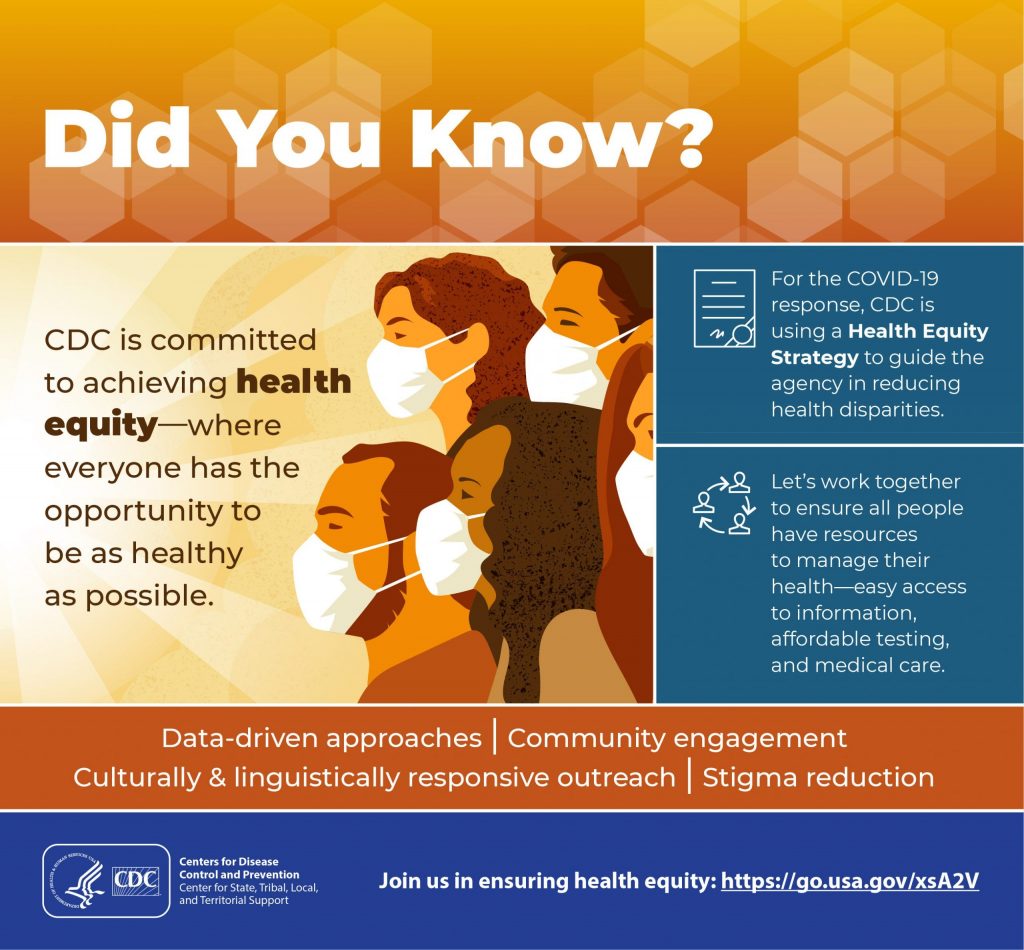
HEALTH EQUITY MEANS THAT EVERY PERSON HAS AN OPPORTUNITY TO ACHIEVE OPTIMAL HEALTH REGARDLESS OF: • THE COLOR OF THEIR SKIN • LEVEL OF EDUCATION • GENDER IDENTITY •SEXUAL ORIENTATION • THE JOB THEY HAVE • THE NEIGHBORHOOD THEY LIVE IN • WHETHER OR NOT THEY HAVE A DISABILITY
This Guide offers lessons learned from practitioners on the front lines of local, state and tribal organizations that are working to promote health and prevent chronic disease health disparities. While health disparities can be addressed at multiple levels, this resource focuses on policies, systems and environmental improvement strategies. Additionally, the resource will help communities incorporate the concept of health equity into core components of public health practice, such as organizational capacity, partnerships, community engagement, identifying health inequities and evaluation.
This resource has four major sections:
- Incorporating Health Equity into Foundational Skills of Public Health
- Maximizing Tobacco-Free Living Strategies to Advance Health Equity
- Maximizing Healthy Food and Beverage Strategies to Advance Health Equity
- Maximizing Active Living Strategies to Advance Health Equity
Many of the 20th and 21st century’s greatest public health achievements (e.g., water fluoridation, motor vehicle safety, food safety) have relied on the use of laws, regulations, and environmental improvement strategies. Health practitioners play an important role in these improvements by engaging the community, identifying needs, conducting analyses, developing partnerships as well as implementing and evaluating evidence-based interventions.

